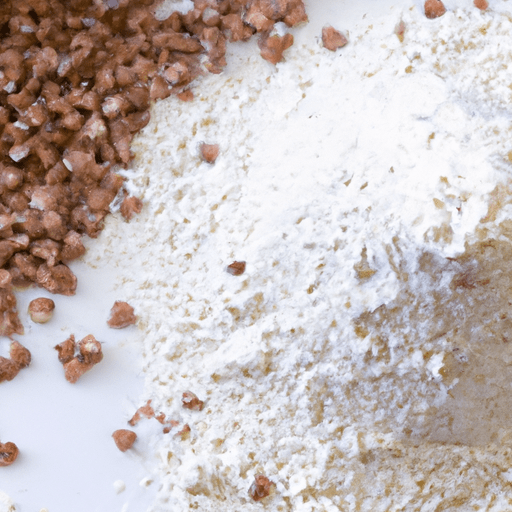Buckwheat Flour: A Nutritious, Gluten-Free Option for Adventurous Cooks
If you’re on a quest to discover unique and wholesome ingredients, look no further than buckwheat flour. This versatile and hearty flour, made from the seeds of the buckwheat plant, offers a distinct flavor, numerous health benefits, and a fascinating history. Whether you’re a gluten-free advocate or simply looking to expand your culinary repertoire, buckwheat flour is a must-try ingredient that will delight your taste buds and nourish your body.
Taste and Texture: A Nutty Delight
Buckwheat flour boasts a unique, earthy flavor that is distinctly nutty and slightly bitter. Once cooked, it reveals a rich, warm aroma that enhances the overall taste of any dish. Its texture is smooth and fine, which lends well to baking and blending with other flours. The color of buckwheat flour can vary from pale white to a darker grayish hue, depending on the milling process.
Versatile Uses: From Pancakes to Pasta
Buckwheat flour is a staple in many cuisines around the world, renowned for its versatility in both sweet and savory recipes. One of the most iconic uses of buckwheat flour is in traditional Russian blini, delicate and fluffy pancakes served with various toppings such as sour cream and caviar. In French cuisine, you’ll find it in the classic Galettes de Sarrasin, savory buckwheat crepes filled with an array of delectable ingredients.
Beyond pancakes and crepes, buckwheat flour shines in baking. It adds a delightful depth of flavor and tenderness to bread, muffins, cookies, and cakes. Its distinct taste pairs exceptionally well with ingredients like chocolate, cinnamon, and honey, elevating the overall culinary experience. Additionally, buckwheat flour can be used to thicken sauces, create flavorful noodle dishes, or even as a coating for fried foods, thanks to its excellent binding properties.
Nutritional Powerhouse: A Gluten-Free Superfood
One of the most significant advantages of buckwheat flour is its exceptional nutritional profile. It is naturally gluten-free, making it an excellent alternative for those with gluten sensitivities or celiac disease. Packed with essential nutrients, it offers an array of health benefits. Buckwheat flour is a valuable source of dietary fiber, which aids in digestion and promotes a healthy gut. It is also rich in antioxidants, such as rutin, which may help reduce inflammation and support cardiovascular health.
Moreover, buckwheat flour is an excellent plant-based protein source, containing all nine essential amino acids. This makes it an attractive option for vegans and vegetarians looking to diversify their protein intake. This flour also boasts a wide range of minerals like magnesium, iron, and zinc, contributing to overall well-being.
A Brief History: From Ancient Grains to Modern Kitchen Staple
Although it bears the name “wheat,” buckwheat is not closely related to wheat at all. Native to Central Asia, it has been cultivated for thousands of years and plays an essential role in the traditional diets of many cultures. From Asia to Europe and beyond, buckwheat has been embraced for its hardiness and nutritional value. Throughout history, it has sustained generations with its abundant nutrients and helped combat food scarcity in challenging times.
Interestingly, buckwheat flour gained popularity in the United States during the 18th century, where it was primarily used for making nourishing porridges and gruels. Today, it has regained its traction amongst health-conscious individuals and versatile home cooks who appreciate its unique taste and incredible health benefits.
Buckwheat flour is a captivating ingredient that adds depth and character to a wide variety of dishes. Its nutty flavor, versatile uses, and remarkable nutritional benefits make it a star in both sweet and savory recipes. Whether you’re exploring gluten-free alternatives or seeking to diversify your culinary experiences, be sure to give buckwheat flour a chance in your kitchen. Embrace this ancient grain, and let its wholesome attributes and historical legacy inspire you on your flavorful journey.
Origin
- Buckwheat, also known as common buckwheat or Japanese buckwheat, is a plant from the Polygonaceae family.
- Contrary to its name, buckwheat is not related to wheat at all, as it is not a grass or a cereal crop.
Common Uses
- Buckwheat flour is commonly used in various culinary preparations, including pancakes, noodles, crepes, and bread.
- In Japan, buckwheat flour is primarily used to make soba noodles, a staple in Japanese cuisine.
- Buckwheat flour can also be used as a gluten-free alternative to wheat flour in baking.
Nutritional Benefits
- Buckwheat flour is highly nutritious and contains essential minerals such as manganese, copper, magnesium, and phosphorus.
- It is a good source of fiber, providing approximately 4 grams of fiber per quarter-cup serving.
- Buckwheat flour is rich in antioxidants, including rutin, which may have potential health benefits such as reducing inflammation and improving heart health.
- It is naturally gluten-free, making it suitable for individuals with gluten intolerances or celiac disease.
Unique Properties or Historical Significance
- Buckwheat has been cultivated for thousands of years and is believed to have originated in Central Asia.
- It has a unique triangular seed, known as a buckwheat “groat,” which is harvested and processed to produce buckwheat flour.
- Buckwheat is known for its strong, distinctive flavor, often described as nutty or earthy.
- Due to its history and cultural significance, buckwheat plays a significant role in various regional cuisines around the world, including Eastern Europe, Japan, and parts of North America.




Use the share button below if you liked it.
It makes me smile, when I see it.